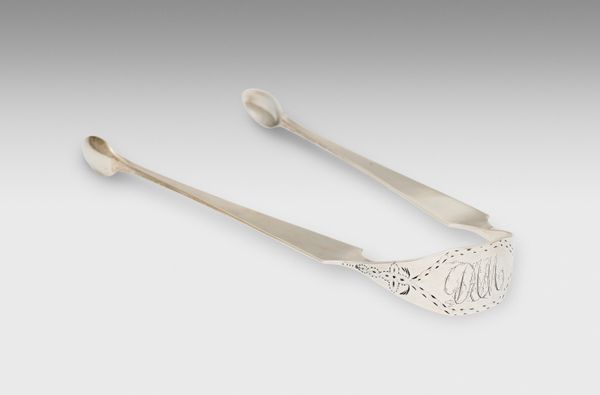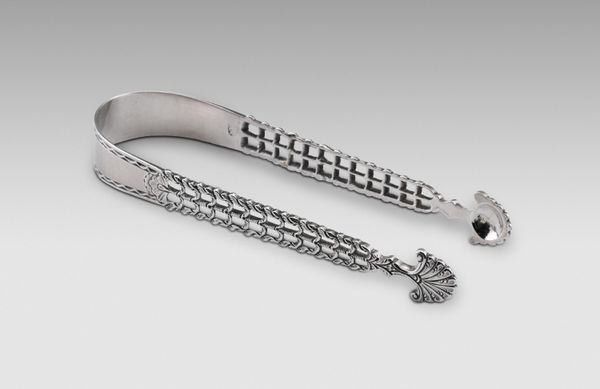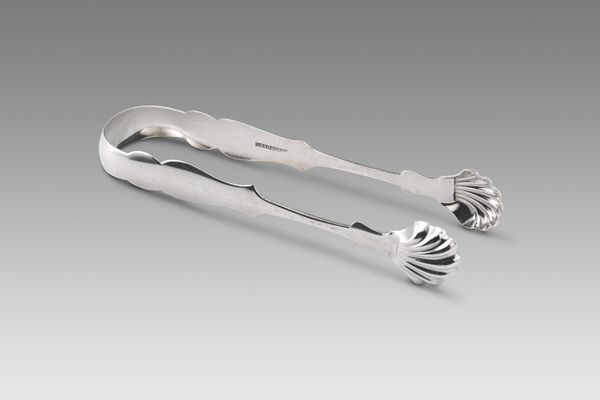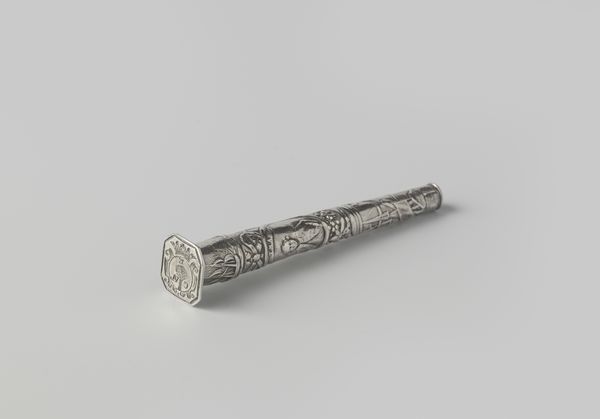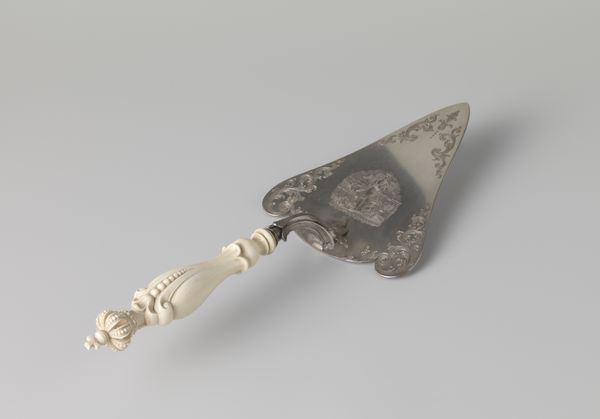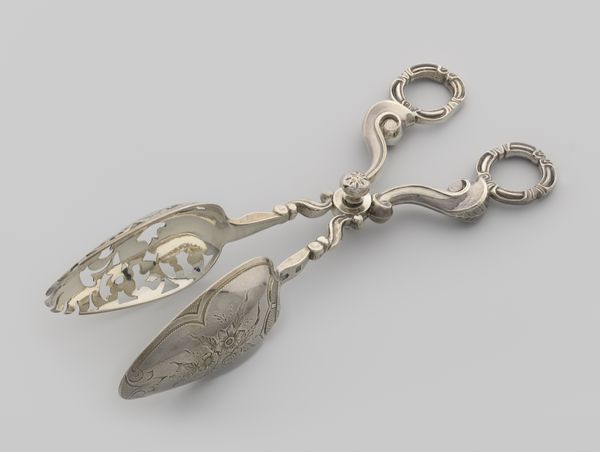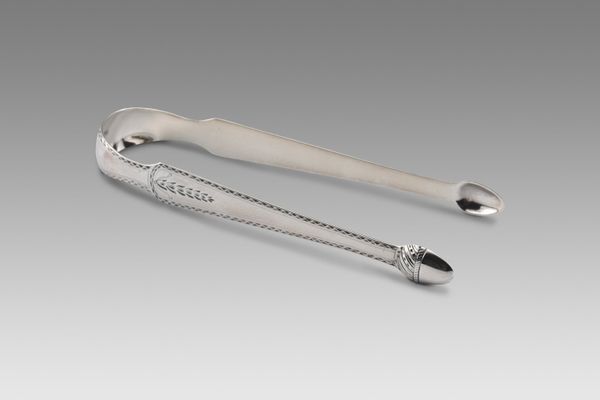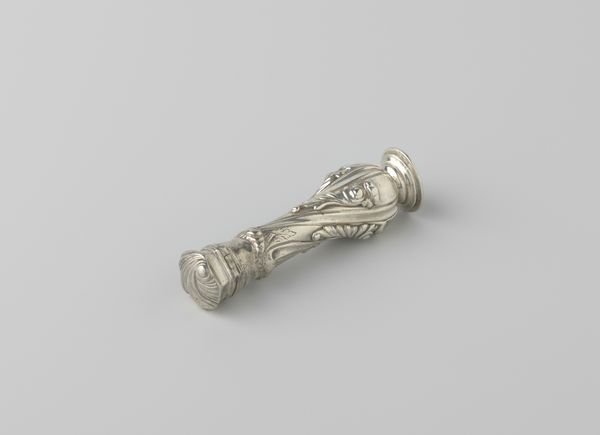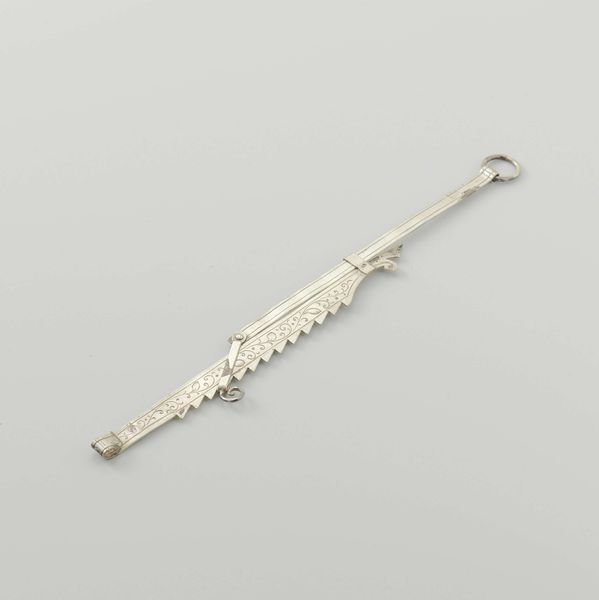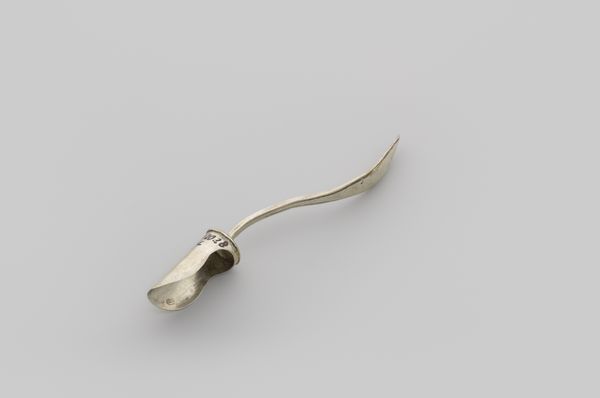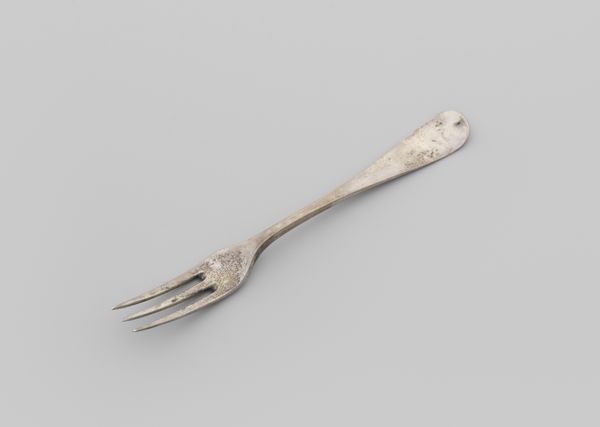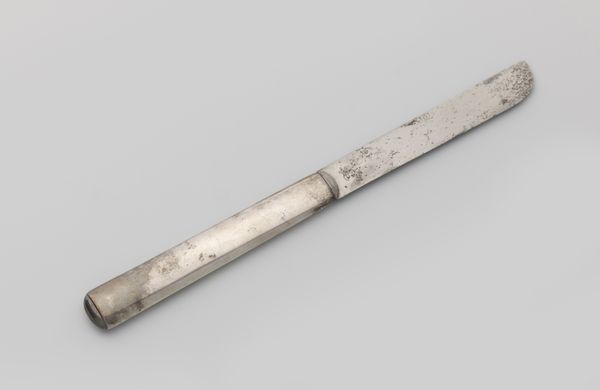
silver, metal
#
silver
#
metal
#
decorative-art
Dimensions: 14 × 4.1 cm (5 1/2 × 1 5/8 in.)
Copyright: Public Domain
Curator: Here we have a pair of sugar tongs, created by Simeon Coley between 1766 and 1769. The piece is currently held at The Art Institute of Chicago. It's a rather exquisite example of decorative art, crafted from silver. Editor: They remind me of a delicate robotic insect—a beetle maybe—ready to pluck a sugared gem. So shiny, they practically hum with anticipation, don't they? Curator: Indeed. Silverware like this wasn’t just functional; it was a status symbol. Owning something so intricately crafted said a lot about a family's wealth and social standing during that era. Imagine the hands that handled these tongs, the conversations held over tea... Editor: Absolutely! It's funny to think about the stories these objects carry silently. Like, were they used to sweeten clandestine love letters with powdered sugar, or maybe accidentally dropped during a tense family argument? Oh, the dramas witnessed! Curator: What interests me most is how pieces like this reflect changing social rituals. Sugar transformed from a rare luxury to a common commodity during the 18th century, driving demand for specialized tableware. This created opportunities for artisans like Coley. Editor: And they didn’t just create function; they crafted beauty. Look at the delicate floral cut-outs. It's like lacework in silver! And those shell-shaped pincers – utterly charming. They transform a mundane act – grabbing sugar – into a little ritual. Curator: The use of neoclassical motifs—flowers and shells—reflects the artistic tastes of the time, indicating how even functional objects were subject to artistic trends and movements. This ensured these tools would remain not only practical but fashionable. Editor: I find the contrast interesting—the cold, hard metal molded into these fluid, organic forms. It is as if the object embodies control over nature—capturing ephemeral beauty in a lasting medium. Curator: Certainly, that’s one perspective. Ultimately, these sugar tongs represent not only an artist’s skill but also the economic and social dynamics of the 18th century. Editor: It's really remarkable how a simple utensil can reveal so much. Curator: Precisely. Decorative objects serve as poignant cultural documents.
Comments
No comments
Be the first to comment and join the conversation on the ultimate creative platform.
